This is the sixth rail bridge to be constructed in this location in the past 150 years. The first was opened in 1877 and served until 1913. It was replaced by a new bridge built slightly to the north. The old structure was only torn down after World War I had ended. At the time there was barely anything on the banks of the river, there was space to simply build another bridge.
A II. at the end of World War II, the new bridge was also destroyed, so an emergency bridge was quickly built, to later be replaced by the single-track "K" bridge. Later builders also had it easy as in 1913 the builders had done them a favour of building new supports next to the old bridge pillars. In other words, there was space to simply build a new, final bridge alongside the "K" Bridge.
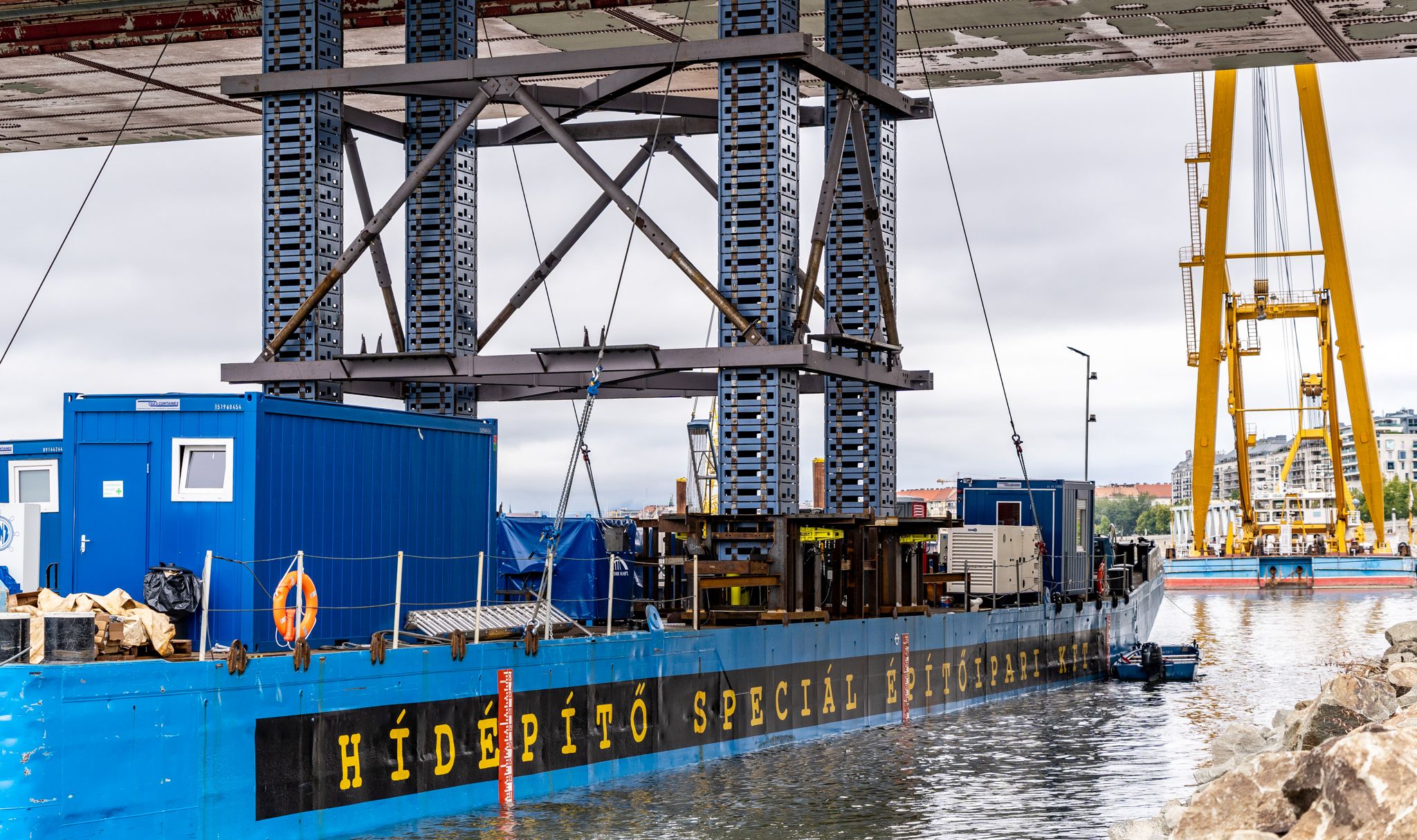
New railway bridge under construction (Photo: Balázs Both/pestbuda.hu)
The maths may seem slightly confusing. The two original bridges built in 1877 and 1913 each had two-tracks. However, later bridges were single-track structures, meaning there were as many bridges as tracks across the river.
The advantage of this solution is that if one of the bridges cannot be used due to unexpected repairs of structural failures, traffic on Hungary's most important railway can continue – with some limitations. Two bridges have stood here side-by-side, with room for one more slightly to the north of them.
These pillars caught the eyes of the architects planning the road bridge in the area. Original plans for what was then the Lágymányos Bridge utilizes the empty pillars of the old railway bridge. This would have drastically reduced construction costs, a fundamental aspect at the time.
In 1984 MÁV Zrt. agreed to allow construction on these pillars if the rail bridge pillars were extended southwards. However, the company eventually turned back on its decision in 1990, and Rákóczi bridge was built on its own support structure.
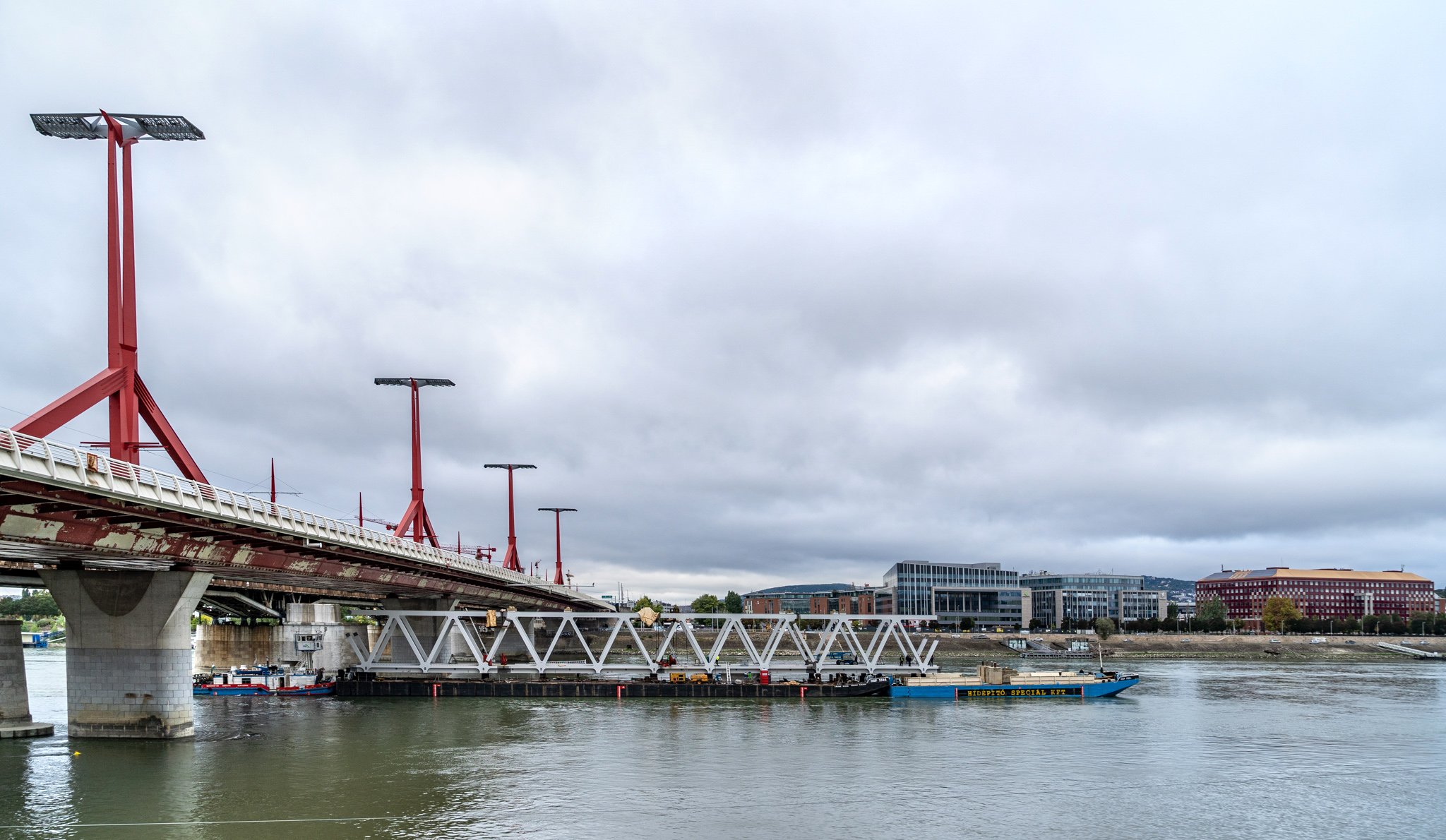 A bridge floats under a bridge. A 420-ton piece of the new structure passes under Rákóczi Bridge and the old rail bridge (Photo: Balázs Both/pestbuda.hu)
A bridge floats under a bridge. A 420-ton piece of the new structure passes under Rákóczi Bridge and the old rail bridge (Photo: Balázs Both/pestbuda.hu)
But why did MÁV Zrt. insist on having room for an extra bridge? Exactly because of the works underway. The company knew that the two rail bridges would have to be renovated at some point, yet two-track traffic must also be ensured. As a result, before the renovation of either rail bridge can begin, a third bridge must be built alongside the two old ones.
The time for this has come; however, instead of renovating the old structures, they will be replaced completely. However, to do this, a new bridge must be built in the tight space between the rail bridges and Rákóczi Bridge.
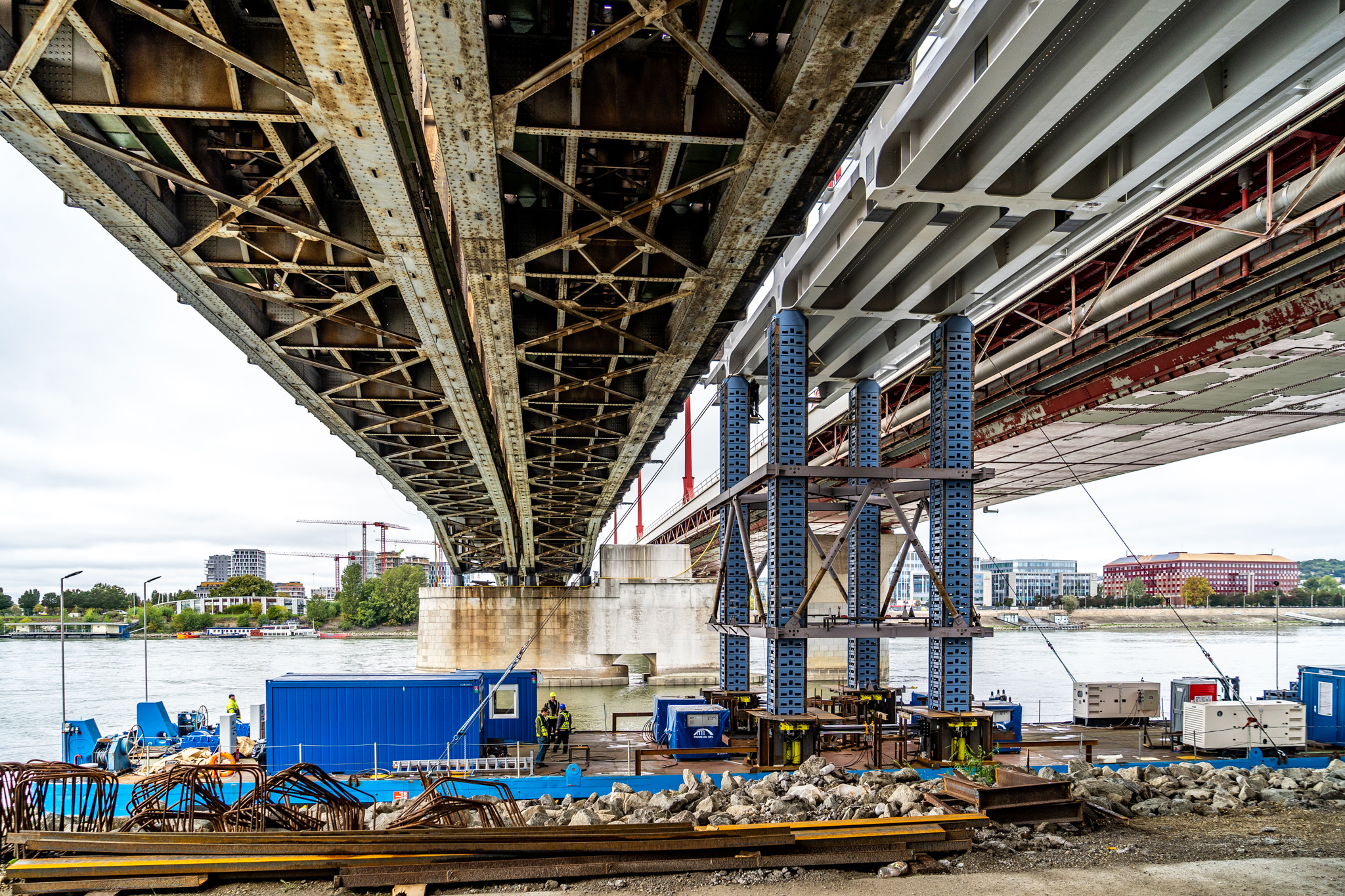
No room for error, high-traffic bridges stand on either side of the construction site (Photo: Balázs Both/pestbuda.hu)
The bridge is being built of 80 metre long elements, known as floating units, which are assembled in Csepel on land from four units. The 420-ton structures are then floated up the Danube to the construction site.
The elements are then loaded on to specially designed hydraulic hoists on two barges. These raise the elements between the openings of the pillars, which are about 100 metres apart, and then push them longitudinally onto the supports.
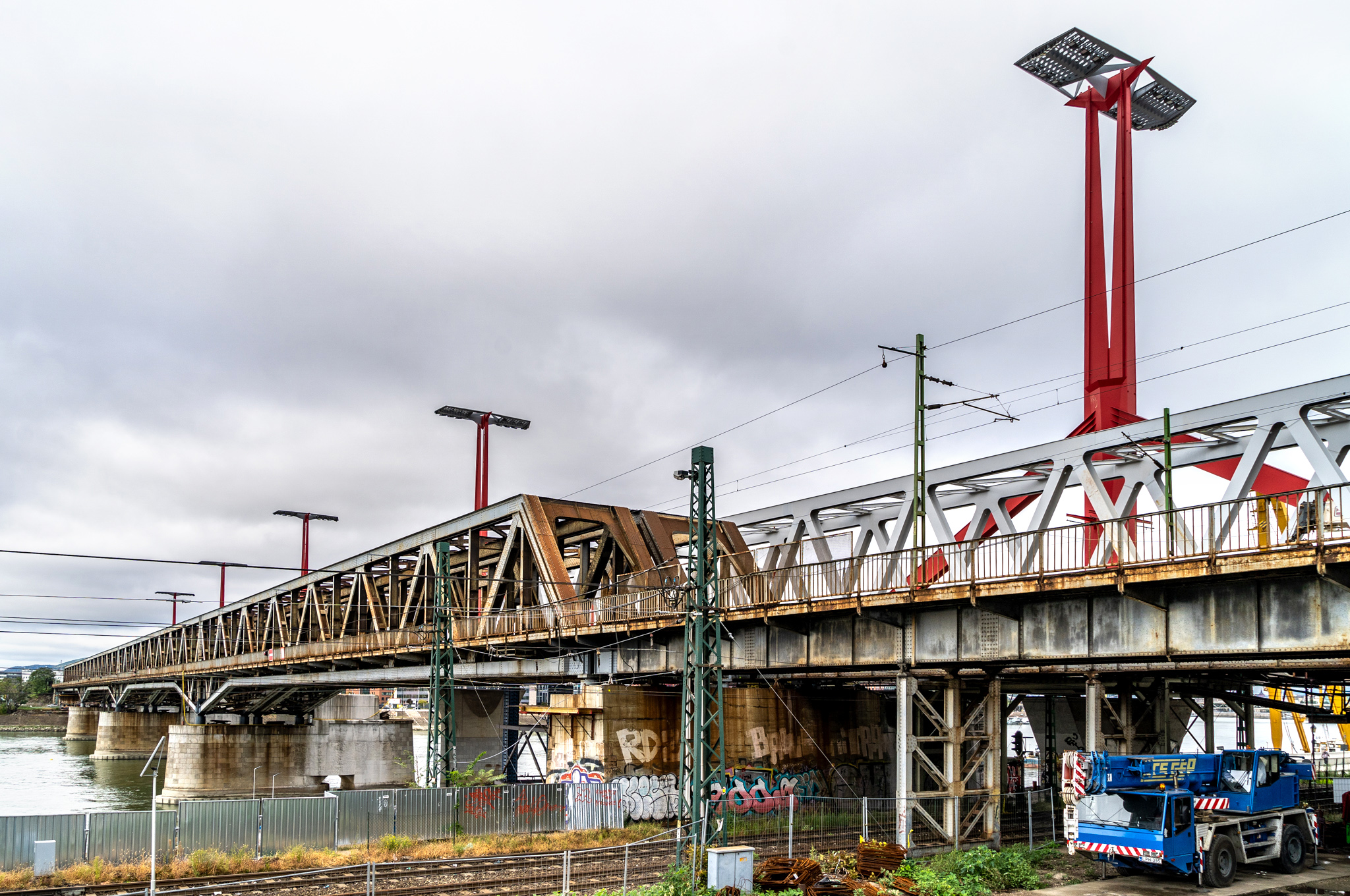 The new structures are raised and pushed onto the supports (Photo: Balázs Both/pestbuda.hu)
The new structures are raised and pushed onto the supports (Photo: Balázs Both/pestbuda.hu)
The first 80-metre element has already been moved into place. The second was floated to the bridges when the Pestbuda team was on-site.
 Temporary wheels help in moving the structure onto the supports (Photo: Balázs Both/pestbuda.hu)
Temporary wheels help in moving the structure onto the supports (Photo: Balázs Both/pestbuda.hu)
The Clark Ádám floating crane has a bearing capacity of 200 tonnes, and thus cannot move the 420-ton elements. The Hebo Lift-8 crane arrived from The Netherlands to support the construction efforts, with a bearing capacity of 300-tonnes.
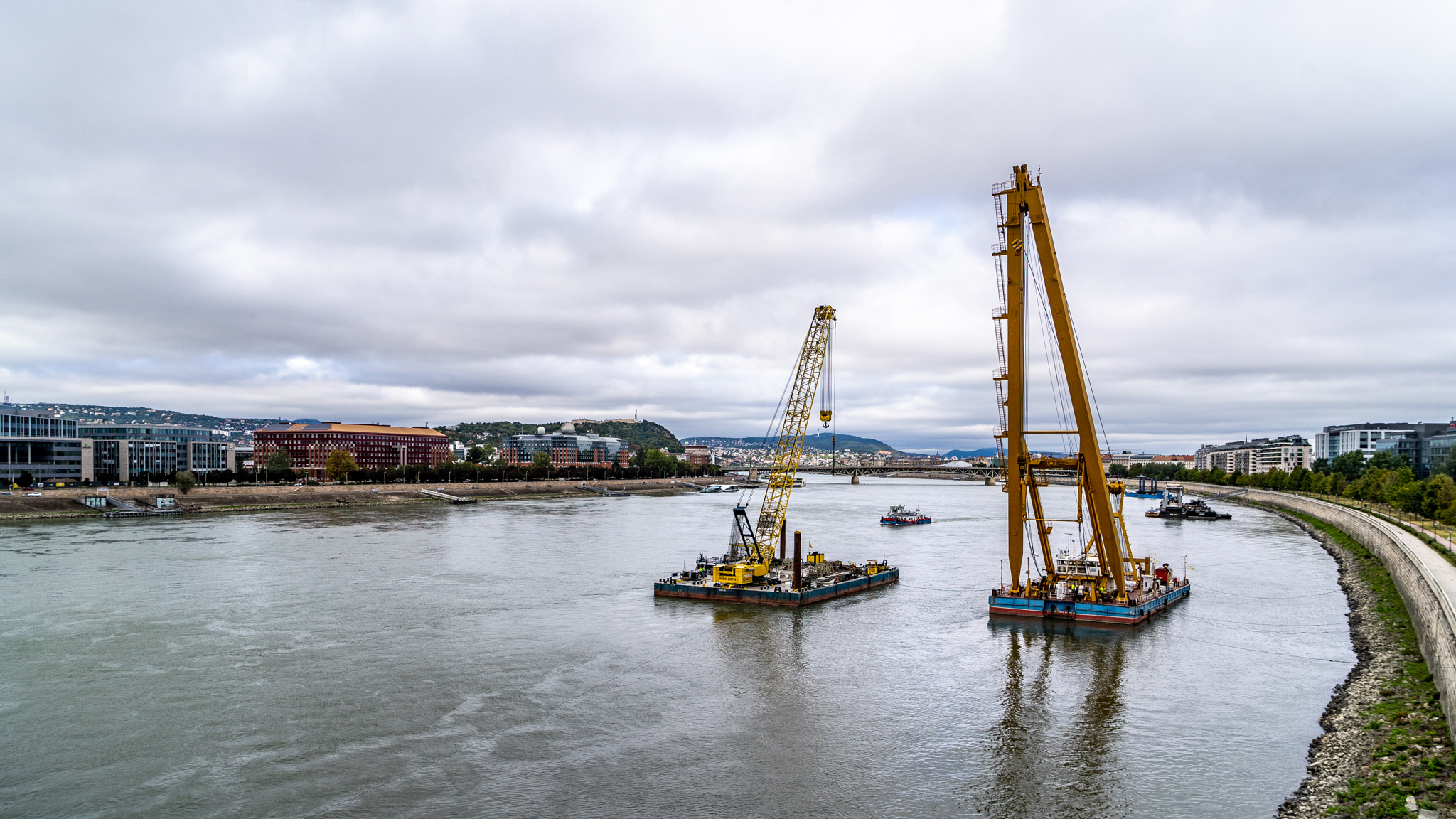 While the crane on the left seems smaller, it is, in fact, stronger (Photo: Balázs Both/pestbuda.hu)
While the crane on the left seems smaller, it is, in fact, stronger (Photo: Balázs Both/pestbuda.hu)
The cranes lift the elements onto two barges, not their final location. The barges then lift and push the elements into their final position.
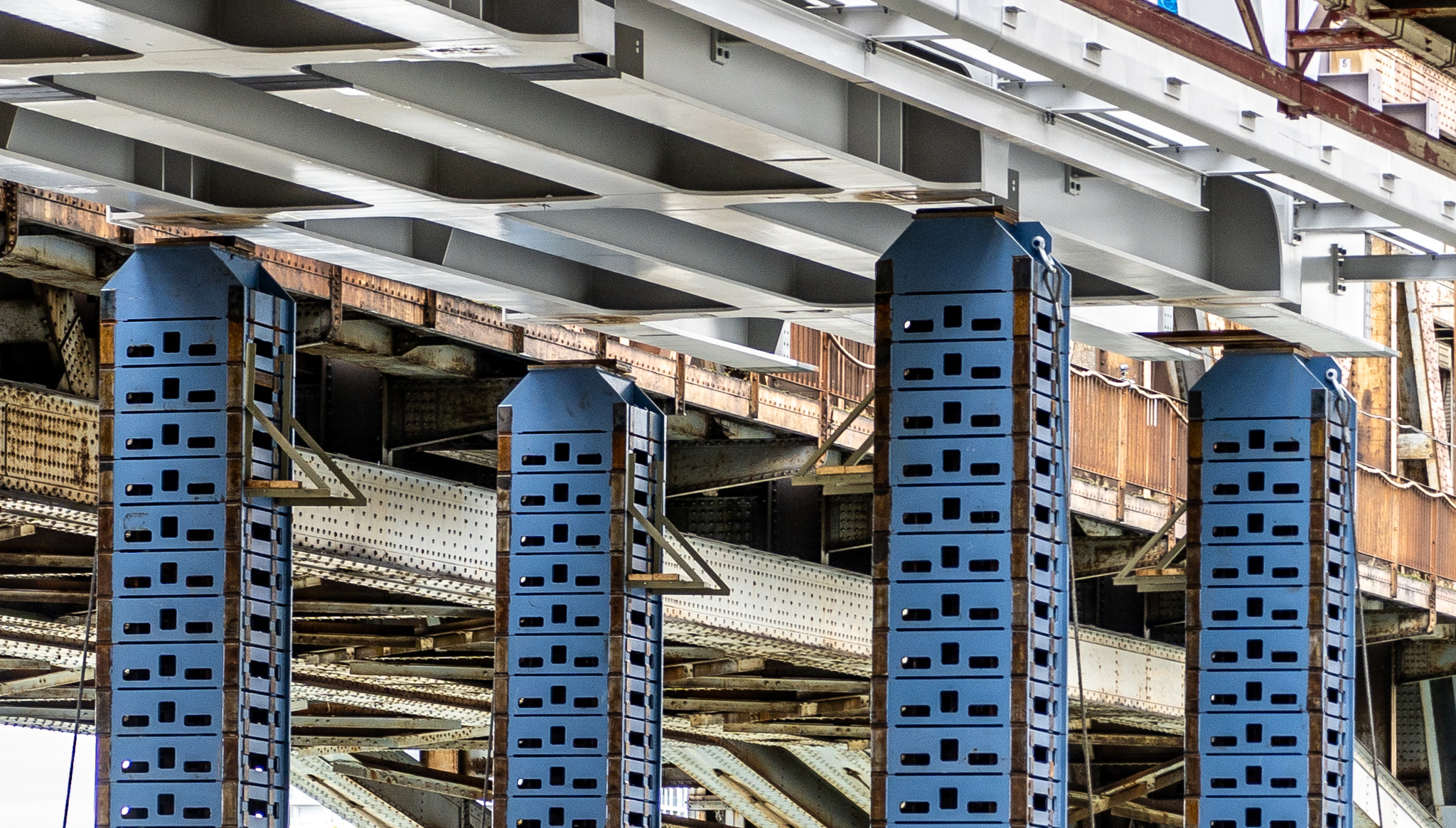 Temporary hoists hold the structure in place (Photo: Balázs Both/pestbuda.hu)
Temporary hoists hold the structure in place (Photo: Balázs Both/pestbuda.hu)
In writing, this may seem simple, but workers are moving 420-ton elements between two highly-used bridges on a river with a current.
Once the new bridge is complete, the old central bridge will be torn down and replaced, followed by the southernmost bridge.
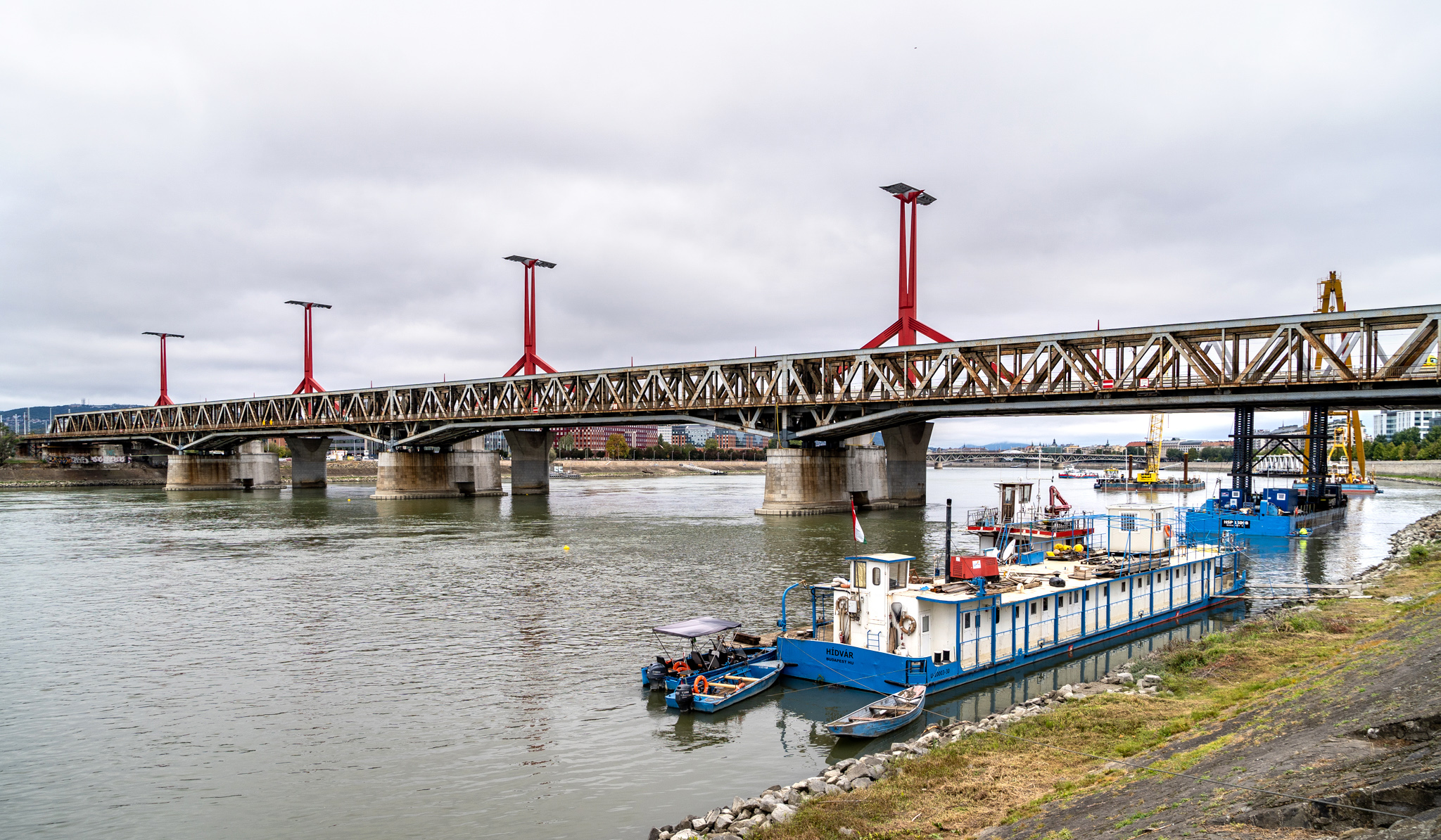 The old railway bridges will be rebuilt completely (Photo: Balázs Both/pestbuda.hu)
The old railway bridges will be rebuilt completely (Photo: Balázs Both/pestbuda.hu)
The construction of the three bridges is part of the Southern Circular Railway project overseen by NIF Zrt. the Budapest Development Centre and the Ministry of Innovation and Technology.
Cover photo: Old meets new, structural elements of the bridges (Photo: Balázs Both/pestbuda.hu




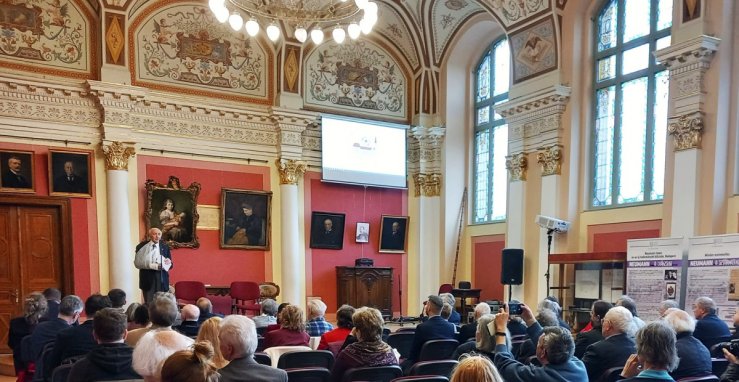

































Hozzászólások
Log in or register to comment!
Login Registration